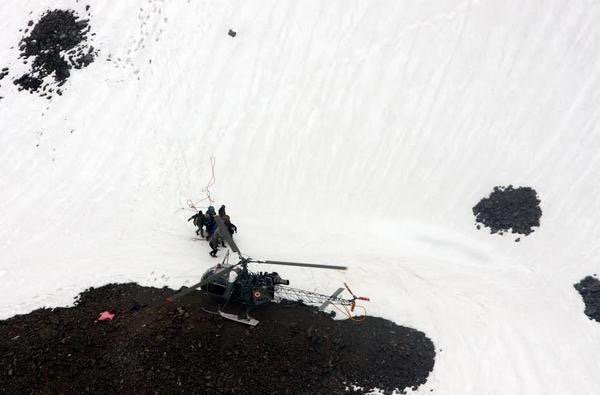41 "early variant" Cheetahs and Chetaks to be replaced with new helicopters from the ALH "reserve stock”. This is a very pragmatic decision by IA since Ka-226s are nowhere in sight and the LUH will take at least 3-4 years to start serial production. Use the ALH for now and send them back to reserve/alternate role as the LUHs come online.
Cheetah, Chetak choppers to retire after string of crashes raise safety concerns DDMs stop this willful distortion of the headlines.
The army has firmed up plans to retire its oldest light-utility helicopters, pushing the panic button, as a string of recent crashes have blemished the safety record of the machines.
A South Block source said that the early variants of the Cheetah and Chetak fleet will be replaced by the locally-made advanced light helicopter (ALH), also known as Dhruv.
The source said the army’s aviation wing would replace 41 Cheetahs and Chetaks with new helicopters from the “ALH reserve stock” and the proposal would be sent for Cabinet committee on security approval soon.
The army and air force grounded their fleets of 280 light-utility helicopters last December, concerned if the machines were fit to fly, after three aviators were killed in a crash in West Bengal.
The Kamov-226T light utility choppers, to be built with Russia, are to replace these helicopters. However, the $1-billion programme is yet to kick off and the military may have to wait several years for the new machines. Russia will supply 60 helicopters in flyaway condition while the remaining 140 will be manufactured in India.
“The manufacturing line of the ALH is quite stable and the machines are coming out at a pretty steady rate. The Kamovs will take time to come,” a senior officer said. The army operates a mix of 150 Cheetahs and Chetaks. A new line of ALH has also been commissioned at Kanpur.
The design of these helicopters is more than 50 years old and their airworthiness is being questioned after a string of mishaps. Nine personnel were killed in six accidents involving these machines during 2012-15. The Cheetahs play a crucial role in supporting the army on the Siachen glacier, one of the world’s highest battlefields, flying at more than 20,000 feet.
A group of army wives met defence minister Manohar Parrikar in 2015, demanding the helicopters be retired. HAL has licence-produced 625 Cheetah and Chetak helicopters. It no longer builds them but is responsible for their maintenance and repair, a cause for concern.
CHEQUERED PAST
November 30, 2016: A Cheetah helicopter crashes at Sukna in West Bengal, killing three officers
March 11, 2016: A Cheetah helicopter crash lands in Hoshiarpur
February 3, 2015: Army chief Gen Bipin Rawat (then a Lt Gen) survives Cheetah crash in Dimapur
October2, 2014: Three army aviators killed in Cheetah crash near Bareilly
May 23, 2012: Pilot killed in Cheetah crash at Siachen
August 18, 2010: 3 officers die in Cheetah crash in Nagaland
The Cheetah and Chetak helicopters, lifeline of troops in high-altitude areas, including the Siachen glacier, are being cleared for flying in batches by Hindustan Aeronautics Limited (HAL) after carrying out a comprehensive safety check.
Frankly, I can never get my head around HAL producing both the Ka-226 and the LUH. Now that it is quite sure that if they come, the deliveries would roughly start at the same time, it makes all the more sense to push Ka-226 into the "back-up" option. If LUH doesn't pan out the way it should (very unlikely but a firm deadline should be issued), then Ka-226s will be produced. Otherwise, HAL should be asked to just double the currently envisioned production rate of LUH. Give Russians other business where we can't design the machines on our own: more FGFAs, submarines, Klub missiles, regional airliner etc.

